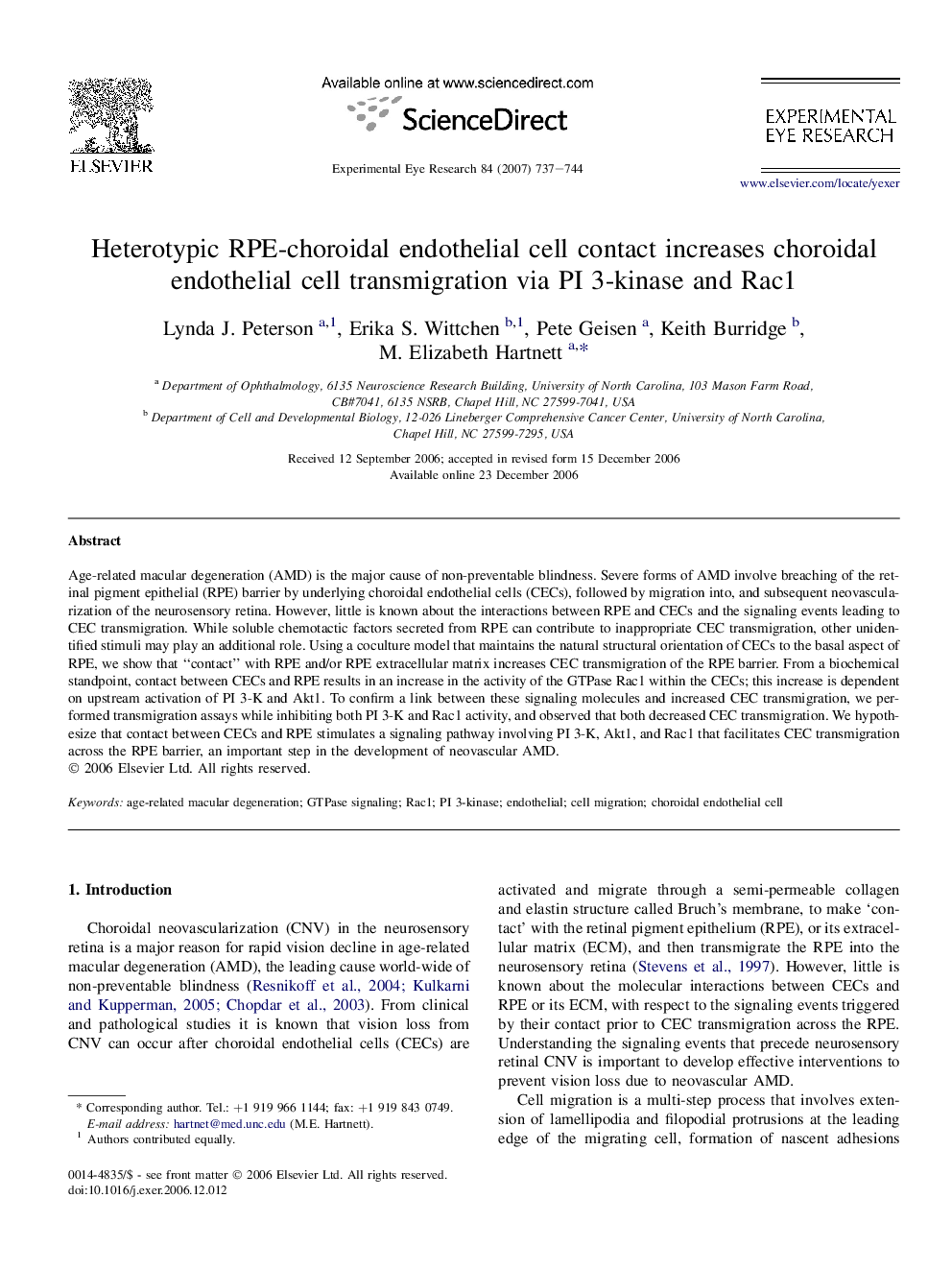| Article ID | Journal | Published Year | Pages | File Type |
|---|---|---|---|---|
| 4012356 | Experimental Eye Research | 2007 | 8 Pages |
Age-related macular degeneration (AMD) is the major cause of non-preventable blindness. Severe forms of AMD involve breaching of the retinal pigment epithelial (RPE) barrier by underlying choroidal endothelial cells (CECs), followed by migration into, and subsequent neovascularization of the neurosensory retina. However, little is known about the interactions between RPE and CECs and the signaling events leading to CEC transmigration. While soluble chemotactic factors secreted from RPE can contribute to inappropriate CEC transmigration, other unidentified stimuli may play an additional role. Using a coculture model that maintains the natural structural orientation of CECs to the basal aspect of RPE, we show that “contact” with RPE and/or RPE extracellular matrix increases CEC transmigration of the RPE barrier. From a biochemical standpoint, contact between CECs and RPE results in an increase in the activity of the GTPase Rac1 within the CECs; this increase is dependent on upstream activation of PI 3-K and Akt1. To confirm a link between these signaling molecules and increased CEC transmigration, we performed transmigration assays while inhibiting both PI 3-K and Rac1 activity, and observed that both decreased CEC transmigration. We hypothesize that contact between CECs and RPE stimulates a signaling pathway involving PI 3-K, Akt1, and Rac1 that facilitates CEC transmigration across the RPE barrier, an important step in the development of neovascular AMD.
